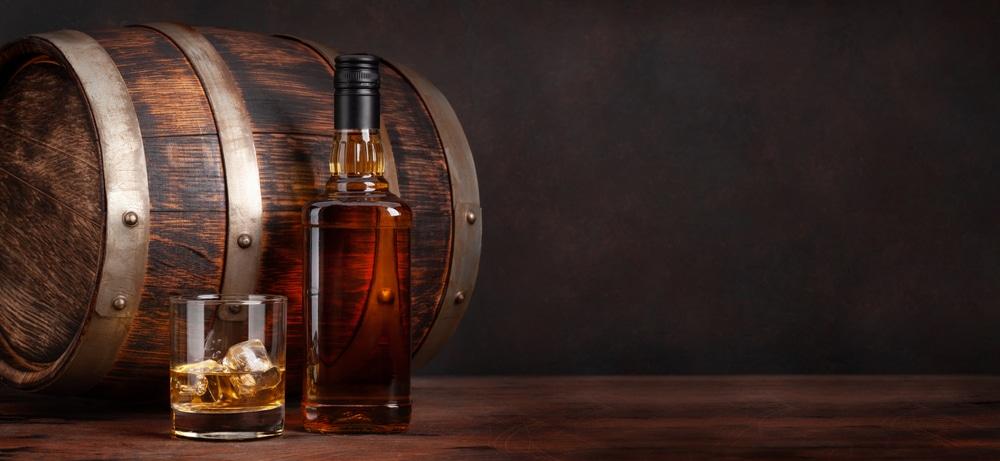Unless you’re Warren Buffett, collecting beautiful artworks or rare whiskies is a lot more fun than watching the stock market. Wealthy investors have long known that these types of passion assets can be a smart counterweight to stock market volatility. Not only do they act as a hedge against inflation, they also typically retain their value during economic downturns and deliver impressive mid to long-term returns.
One key gauge of the health of the luxury goods sector is the Knight Frank Luxury Investment Index.
In 2020 fine wine came in second place with 13% growth over the year and 10-year growth of 127%, hot on the heels of the niche luxury handbag market with 17% growth.
Rare whisky is another strong performer, with 478% growth over the past decade.



Investors interested in diversifying their portfolio and acquiring statement pieces for their home may want to consider the art market. While this might conjure up images of dusty portraits by Rembrandt or soft Impressionist landscapes, experts now consider Contemporary Art to be the category with greatest growth potential. The sector has experienced a truly meteoric rise in auction turnover from just $92 million in 2000 to $1,993 million in 2019, equivalent to a 2,100% increase. According to the Artprice Contemporary Art Market Report 2020, “Contemporary Art has become the primary growth driver of the global art market” in the 21st century.
While fine wine, contemporary art and rare whisky all look good on paper, like any savvy investor you’re probably wondering if it’s all too good to be true. We spoke to three experts in the fine wine, contemporary art, and rare whisky markets to get their insider tips on profiting safely with these luxury assets.
Fine Wine
Justin Knock is Director of Wine at Oeno, a wine investment firm based in the City of London, and one of just a few hundred Masters of Wine who must pass an extremely taxing set of exams to secure their sought-after title.
“Wine has been a wonderful investment for long-term collectors, and has a decades-long track record of excellent returns that have often exceeded 10% per annum. The wine market is becoming increasingly diversified beyond the top producers from Bordeaux, with Burgundy, Champagne, Tuscany, Piedmont and the Napa Valley all becoming more desirable and growing nicely in value over the last decade.
Download Guide to Fine Wine Investing
The fundamentals for further growth also look strong. The pandemic has seen a marked rise in the quality of wine consumed at home, and the recently reopened restaurant trade reflects that strength. Wine consumption is also increasingly diversified and growing beyond traditional European and North American markets, while on the supply side we are seeing the influence of climate change on the production of fine wine recently. Fires in 2020 in Australia and California, devastating frosts and hail across much of Europe this spring and now flooding in Germany and central Europe are becoming indicative of annual difficulties in wine production.
All of these factors combine to present a strong and growing demand scenario underpinned by supply challenges. Ultimately the investment returns in wine are driven by consumption so we can see exciting investment returns ahead this decade.
Exit strategies have historically been an under-developed part of the market with few companies offering nothing more than a buy-and-hope strategy and costly brokerage to liquidate. Smart investors should interrogate their portfolio managers on their exit strategies. The best will be able to offer a full range of options beyond under-bond brokerage. This is one reason why we’ve developed Oeno House – a luxury retail venue and wine bar that also offers elite concierge services – to broaden and hasten exit options whilst generating alpha on returns.”
Contemporary Art
Julian Usher is Head of Sales at Red Eight Gallery which specialises connecting investors with emerging talent and established artists.
“As we look back over the past year or so, it’s only natural to breathe a sigh of relief. For smart investors this is also a great moment to consider diversifying your portfolio ahead of anticipated stock market volatility as our economies continue to recover from COVID-19. When it comes to investment potential, contemporary art has held its value despite the pandemic, remaining little affected by wider market factors like macroeconomics and political drivers.
Download Guide to Art Investing
What excites me personally about art is that this market is truly unique in offering investors great potential returns as well as the opportunity to acquire a stunning piece to display in your home or work space. I think that’s why we’re seeing more investors come to us than ever before, thanks to our strong roster of emerging and established talent who have used the lockdowns over the past year to produce some truly incredible work.
My key tips for starting an investment-oriented art collection would be to enter at a level you feel comfortable with and build from there. There is lots of online research material out there to educate yourself and build a base you can then move forward from, including excellent industry reports from the likes of Artprice and Art Basel/UBS. Understand the different mediums used to produce art and the different movers and shakers within the industry.



At Red Eight our business model centres on our relationships with both our artists and investors. We work closely with all our artists to help them build their careers. This in turn delivers greater returns for our investors as their artworks appreciate in line with the artist’s reputation and demand for a particular artist’s work.
The past 12 months have also seen the rise of NFTs (non-fungible tokens) and a global conversation around digital art. As a forward-thinking gallery, we have partnered with Rare.Markets so our investors can purchase both a physical artwork and an NFT giving them digital ownership of that piece. This is a fascinating but fairly new market, so I always recommend investors speak to an expert to understand their options before taking the plunge.”
Whisky Investment
Jass Patel has worked in the spirits industry for over two decades, and his passion for sourcing rare whisky casks and bottles inspired him to co-found Tomoka Casks which helps investors enter the whisky cask market.
“Whisky has been a great investment platform for many years mainly thanks to the bottle market. In 2019 a 60 year old single malt from The Macallan claimed the title of the world’s most expensive whisky ever sold with a hammer price of $1.9 million, marking a watershed moment for investor interest in this lucrative sector. The growth in the rare whisky bottle trade has also uplifted the cask market, with more and more investors enquiring about cask purchases thanks to their strong mid to long-term potential.
Download Whisky Investment Guide
Bottles require many factors to be considered investment-grade, such as a good review, a limited number of bottles on the market, limited editions, prestigious awards, and so on. Casks have the advantage here because they are always appreciating in value; the longer the whisky stays in the cask, the older it gets and the more expensive it becomes. Now whilst this may be true for any whisky that sits in bond, investors and collectors will only see big returns on old and rare single malts such as Ardbeg, Highland park, Dalmore and Bowmore to name a few. The tricky part is finding whiskies from these iconic distilleries in good condition and with excellent provenance.



If you’re considering entering this market, bear in mind that casks are at a premium at the moment and the exit offered by many brokers could be outside what is achievable in the years to come. I highly recommend speaking to an expert to get some awareness of the market and define your goal for your investment. Some casks are purely for portfolio diversification and some would be considered investment-grade, so make sure you know what you are buying and whether it fits your requirements.
The COVID-19 pandemic had a pronounced impact on whisky production last year because lots of distilleries had to shut down in the first lockdown. This means demand for casks from 2020 is likely to exceed supply in coming years, so investors might want to look out for whiskies from this year.
Tomoka is a retailer of both bottles and casks, so we’re always happy to discuss which options are best for you. Unlike other whisky investment services, our hybrid retail and broking structure means we can provide a clear and reliable exit to your investment whether it’s casks or bottles.
For any investors who are new to the whisky market, my final tip would be to consider that the cask whisky market is very popular right now. There have been instances of unscrupulous suppliers and brokers promising impossibly high returns. Stay safe in the market by being realistic on what your cask can return, and make sure you work with trusted experts who know the market inside out.
